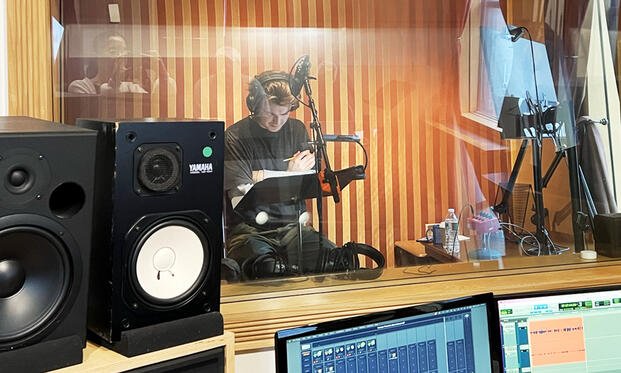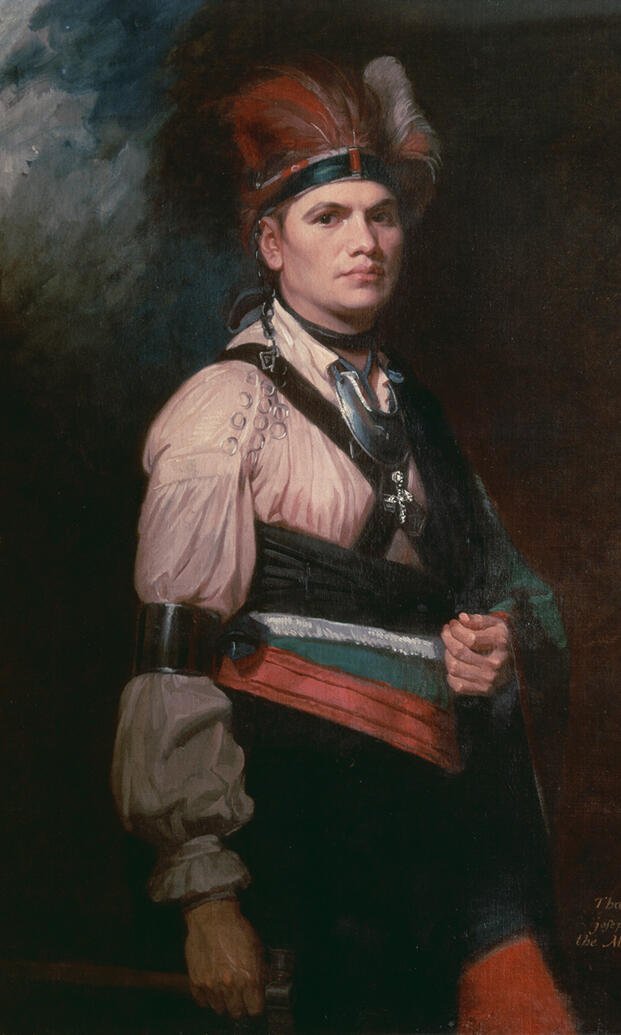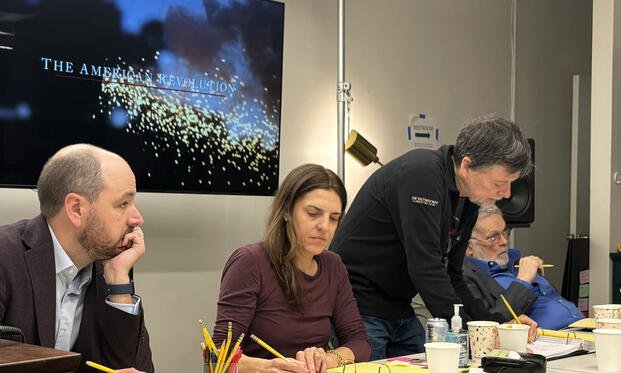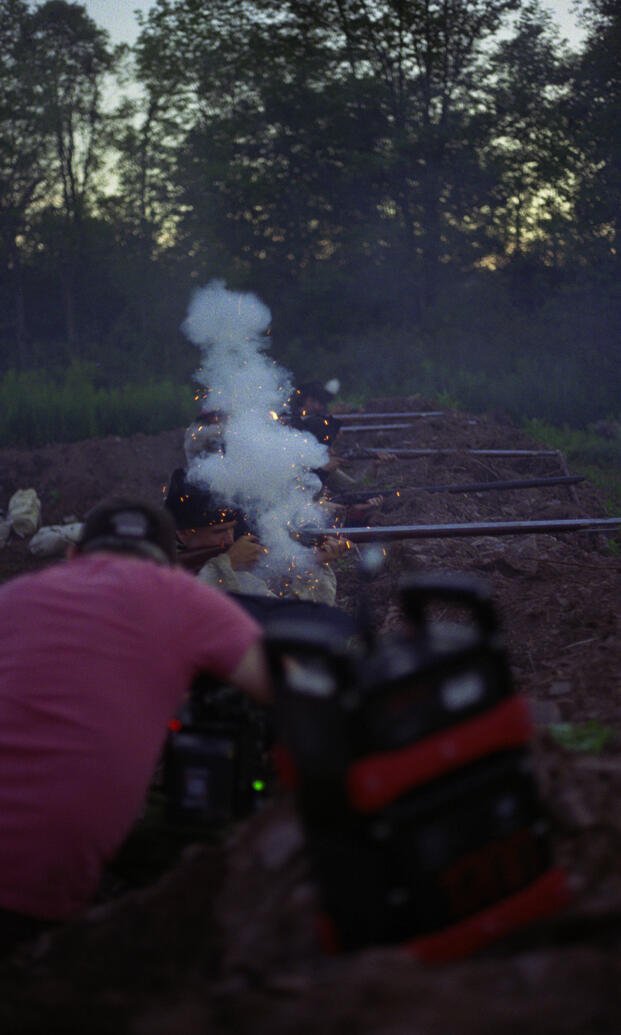Ken Burns’ new PBS docuseries The American Revolution is a six-part, 12-hour series that puts troops, camp followers, and commanders back on muddy 18th-century ground. Co-directors Sarah Botstein and David Schmidt sat down with Military.com to tell how they rebuilt the war from the enlisted level up, giving us a depiction of the revolution audiences have never seen before.
Why it Matters for Military.com Readers
This isn’t a powdered-wig highlight reel. Botstein and Schmidt told me their goal was to show the war as service members lived it—marches in summer heat, handmade munitions, disease, bayonets, divided loyalties, and the families who trailed the armies. Below are the best nuggets from our conversation, edited for clarity.
1. Why Reenactments Now? Putting Boots Back in the Mud
The filmmakers had never staged reenactments in a Florentine Films series. That changed when Schmidt worked on Benjamin Franklin and realized you can’t understand an 18th-century printing press—or a campaign—without seeing hands at work.
“You need to feel human presence… boots on the ground and in the mud… bullets being melted into shape,” Schmidt said. “ You need to understand that in order to win the Yorktown campaign, they have to walk in the heat of summer, from New York to Virginia and not just them they have to bring animals with them and there’s women and children following the armies as well… We couldn’t have made this film anything like it is without their [reenactment actors] commitment to- the history and getting it right.”

2. Women and Children in the American Revolution Weren’t Background Extras
If you learned the Revolution as a battlefield-only story, the series will correct that.
“Women are always at the heart of any story of war,” Botstein told me. “They nursed the wounded, buried the dead, ran homesteads, spread news, led boycotts—long before they had the right to vote. They’re making huge decisions, and contributing to the boycotts, the war effort.”
The opening episode includes a laundry sequence that the team had to film themselves because they couldn’t find period images. Visibility is the point.

3. A Home-Front War: Occupied Cities and Civilian Diaries
Unlike many modern wars, this one unfolded on American ground—New York, Boston, Philadelphia, Savannah, Charleston. The team leans on a deep bench of first-person writing (especially by women) and a cast of 61 voice actors to read it.
Josh Brolin voices Washington—an inspired “don’t do the accent, do the feeling” choice that, per Botstein, clicked only after several strong auditions came up short.
“Ken [Burns] was flying home from Europe and watched Dune 2 and landed and calls and said, I think we should try Josh Brolin.” Botstein shared with me, “We went, oh my God, imagine if we got Josh Brolin and he not only came in, he hit it out of the park, so it’s really great.”
4. Washington the Commander, Not Just the Monument
The series pushes past marble.
“He might not be one of the great generals, but he’s one of the great commanders,” Schmidt said. You’ll hear stirring general orders—then private letters admitting fear and doubt. The portrait is adaptability plus restraint: a commander who kept the military subordinate to civilian control and then modeled it as president.
Ken Burns’ The American Revolution: Reenactments, Washington, Arnold & More (Director Interview)
Ryan LaBee talks with The American Revolution co-directors Sarah Botstein and David Schmidt about reenactments, women and camp followers, Native nations’ perspectives, and how Ken Burns’ new PBS docuseries puts troops back in the mud of the Revolutionary War.
In this interview, the directors break down:
- Why Ken Burns’ team used large-scale reenactments for the first time
- How the series shows the home-front war in occupied American cities
- Women’s roles and camp life: nursing, supply, homesteads, boycotts
- Native nations’ sovereignty and the war in Indian Country
- A more human George Washington and a complicated Benedict Arnold
- Loyalists, the “exhausted middle,” and why division at the founding matters
5. Benedict Arnold: From Hero of the Revolution to Traitor
No cartoon villain to be found here. The film tracks Arnold, the brilliant field leader, the wounded pride, the Loyalist romance, and the choices that follow. This was, as the directors told me in my exclusive interview with them (you can watch in full in the video above), by design.
“People are fighting for ideology and for opportunity—often both,” the directors noted. That lens extends to Regulars, militias, Loyalists, enslaved people, and Native nations.
6. Loyalists and the Americans Who Wanted the Fighting to Stop
Classrooms often file the Revolution into Patriots vs. Redcoats. The series restores Loyalists—and the large number of Americans who wanted the fighting to end, period.
“We were divided at the founding,” Botstein said. “We’ve always been divided. Understanding that is part of the American experience.”

Credit: National Gallery of Canada / Bridgeman Images.
7. Native Nations at the Center of the American Revolution
Botstein called her own earlier knowledge “embarrassingly thin”—and the series works to change that.
Washington sent armies into Indian Country; Native nations fought to defend sovereignty, allying with Crown or Congress as interest dictated. For further reading, the directors recommended Colin G. Calloway’s The American Revolution in Indian Country: Crisis and Diversity in Native American Communities, Kathleen DuVal’s Independence Lost: Lives on the Edge of the American Revolution, Ned Blackhawk’s The Rediscovery of America: Native Peoples and the Unmaking of U.S. History, and forthcoming work by Michael Witgen.

8. How Revolutionary Ideals Echoed From Jefferson to Ho Chi Minh
Ideas of liberty traveled far beyond the Continental Army.
“When Ho Chi Minh declared independence in 1945, he quoted Jefferson,” Schmidt reminded me. “The ideals are universal—even when later adversaries invoke them.”
Historians in the film also trace how European aristocrats read Washington’s republican example against their own monarchies.
9. A Stacked Cast: Josh Brolin as Washington and 60 More Voices
Sixty-one voices, including Josh Brolin, Matthew Rhys, Kenneth Branagh, Tobias Menzies, Maya Hawke, Alden Ehrenreich and more. The performances are designed to feel lived-in, not theatrical—“the character wrote their own dialogue,” as Schmidt put it.

10. For Today’s Troops and Vets, the Grind Will Feel Familiar
The directors hope troops see themselves most in Joseph Plumb Martin, the Continental “grunt” whose memoir anchors the enlisted experience—hard marches, boredom, terror, gallows humor, loyalty to the line.
“This was a brutal, long, difficult war,” Botstein said. “Climate, topography, disease, the bayonet. We stand on the shoulders of those sacrifices.”
Plumb Martin wrote a firsthand account of his time in the Continental Army in a wonderfully vivid memoir titled A Narrative of a Revolutionary Soldier. Through his writings, the day-in-the-life of a Revolutionary War soldier comes to life.

Why this series will land with Military.com readers
Ken Burns’ The American Revolution will hit home for Military.com readers because:
- Doctrine by doing: handmade munitions, supply lines, non-stop logistics—shown, not lectured.
- Chain of command and restraint: Washington’s civilian-military model gets rare, thoughtful space.
- Whole force picture: Regulars, militia, camp followers, contractors, allies, and adversaries.
- History as uncertainty: the outcome wasn’t prewritten; adaptability mattered.
Want to dig deeper?
- Books the filmmakers cited:
The American Revolution in Indian Country (Calloway) • Independence Lost (DuVal) • The Rediscovery of America (Blackhawk). - Primary voice to know: A Narrative of a Revolutionary Soldier by Joseph Plumb Martin.
Bottom line
Ken Burns’ The American Revolution (directed by Sarah Botstein and David Schmidt, along with Burns) puts sand, sweat and hard choices back into the Revolutionary War story most Americans admit they only half know…
Ken Burns’ new PBS docuseries The American Revolution, a six-part, 12-hour series, premieres Sunday, November 16 at 8 p.m. on PBS (check local listings). New episodes air in primetime every night through Friday, November 21, with each installment broadcasting twice each evening.
Story Continues
Read the full article here



